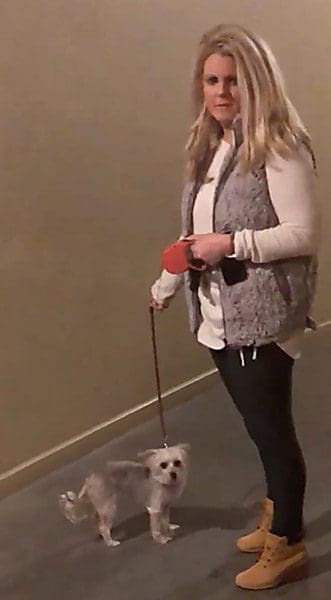See Nothing, Say Nothing
Robert Hampton, American Renaissance, October 17, 2018
White Americans now need to be careful not to be rude to blacks; they could lose their jobs and reputations.
This year has seen a trend of blacks videotaping unpleasant interactions with whites. These usually involve a white person calling the police because of suspicious behavior. The videos go viral and are picked up by media eager to shame whites. Journalists cite these incidents as proof of how racist whites are and how hard life is for blacks. It doesn’t matter that the white “aggressors” are harassed by internet mobs, lose their jobs, and have their names ruined. The black “victim” becomes an internet hero.
The latest case is from last weekend. A white woman in St. Louis, Missouri, aggressively questioned a black man trying to enter his apartment building and demanded to see his identification. The man caught it all on camera, and the video gained over 2 million views.

The offending woman, as captured by the black man.
Local news reported that the woman was fired by her employer. The company conceded that the woman was not at work at the time of the encounter, but it insisted it would not tolerate “racism or racial profiling at our company.”
This incident followed that of a black babysitter looking after two white children who complained on camera last week that a white woman called the cops on him — this even earned a report from the New York Times. The babysitter is a 27-year-old black man, hardly a typical caretaker for white children. The Times called this “babysitting while black.”
There were two similar cases in July. A white CVS manager was fired after he called the cops on a black woman customer who threw a tantrum over the rejection of a fraudulent coupon and refused to leave the store. The man’s name was all over social media and the press sided with the black woman.
A white neighborhood swimming-pool monitor lost his job after he called the police on a black woman who angrily refused to show her ID. His name was also on social media, and again, the New York Times covered the encounter, dubbing the man “ID Adam.”
These incidents came after the much-covered “racial profiling” ruckus at a Philadelphia Starbucks in April. Video showed two black men being ushered out of the coffee shop by police after they asked to use the rest room, refused to buy anything, and then refused to leave. This video had a huge impact and probably taught blacks the value of taping encounters. The result was intense, undeserved humiliation for Starbucks and for the manager who called the police. There was also a “confidential financial settlement” between the blacks and Starbucks.
Blacks now know they can record any unpleasant interaction with whites for their own gain. They know the press, corporate America, and social media mobs will take their side and humiliate the whites. They will be the heroes.
The results of these incidents belie the myth that America is governed by white supremacy — the very myth those who circulate these videos try to uphold. If America were a supremacist country, none of these whites would be fired and the media would defend them. Instead, whites are severely punished for calling attention to disruptive or suspicious blacks. Encouraged by The Daily Beast and HuffPost, some politicians even want to make the act of calling the cops on “innocent black people” a hate crime, further demonstrating that society’s bias favors black complaints.
The effect of these videos and how they are treated is to bully whites into not noticing the connection between race and crime. The media never point out that blacks commit more crime per capita and are more aggressive than any other group. Most whites know they have more to fear from blacks than from whites but dare not say so publicly. However, that does not prevent them from calling the police when they see a black man behaving suspiciously. Fear clears the mind.
This perfectly normal behavior must be stopped. That’s why the power of shame and economic intimidation is brought down on whites who try to protect themselves from potential threats.
We’re routinely told by the government that if we “see something, say something.” If the suspicious person is black, we’d better see nothing, say nothing.















